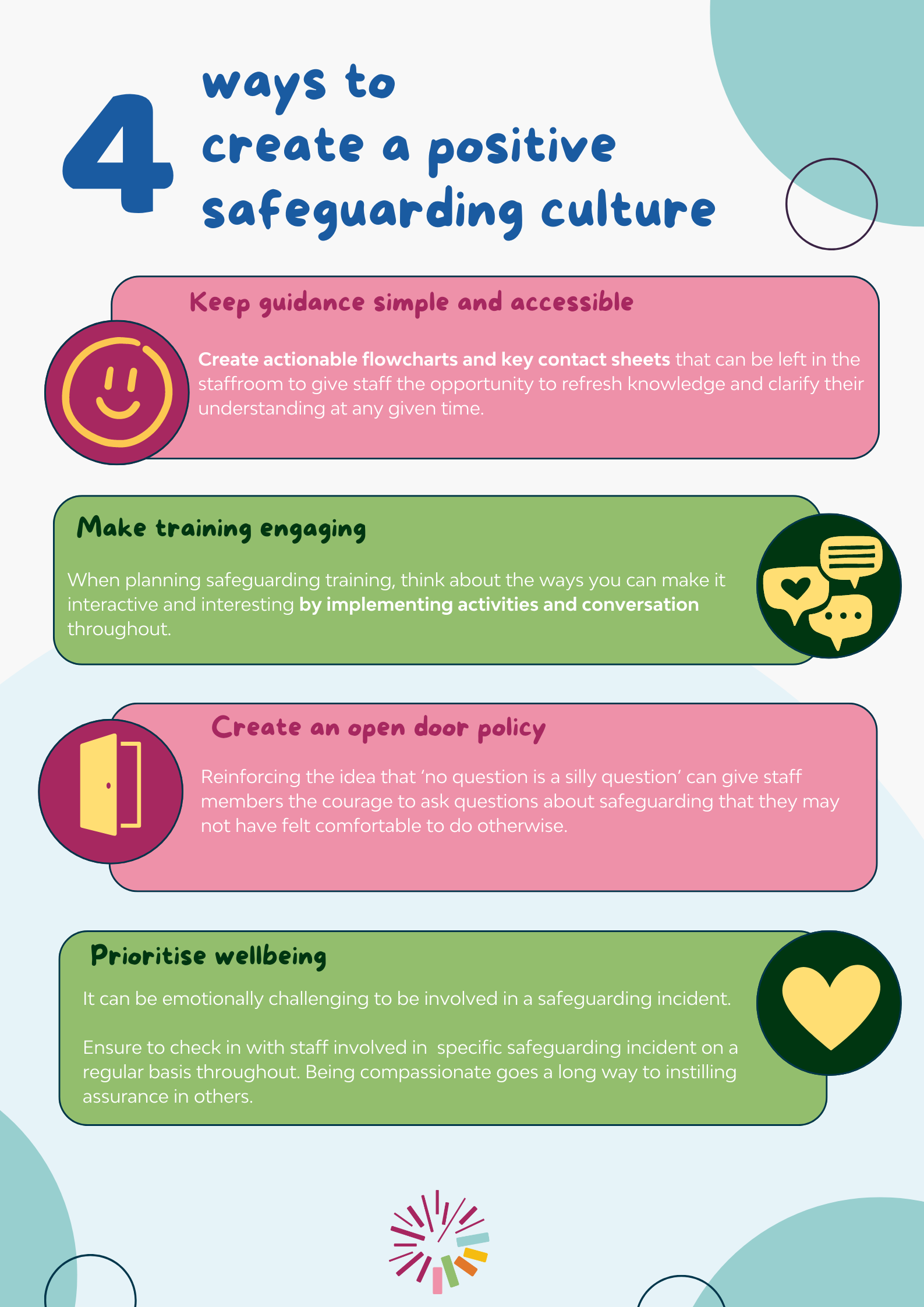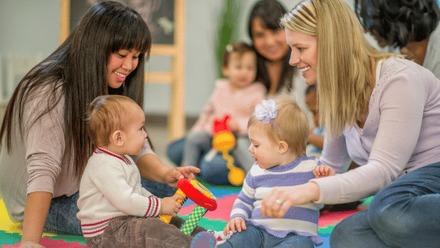4 ways to create a positive safeguarding culture in early education and care
Safeguarding is the most important part of our role in early education and care. An effective safeguarding process relies on diligence and care to ensure we are doing everything possible to recognise potential risks and work to keep children safe.
But working with safeguarding incidents can be an emotionally challenging time for professionals involved in the process. It can be a difficult topic to discuss, despite how vital it is that we do. Creating a positive culture in the workplace around safeguarding can support staff with their confidence to confront safeguarding issues if and when they arise.
Things we can do
Keep guidance simple and accessible
No two children are the same and, similarly, no two incidents are ever the same due to their unique circumstances and the family’s individual needs. Safeguarding policies are designed to provide guidance for the most relevant steps to take next, but sometimes this can become confusing where lines become blurred between roles and how we think about the situations.
Keeping guidance accessible is a great way to normalise and ensure familiarity in safeguarding procedures. Whilst policies are required to be detailed and lengthy to ensure full coverage, it can be useful to create actionable flowcharts and key contact sheets that can be left in the staffroom to give staff the opportunity to refresh knowledge and clarify their understanding at any given time.
Make training engaging
Every member of staff working with children must undergo safeguarding training with statutory refreshers to supplement knowledge and changes to legislation. This type of training can sometimes be found to be text-heavy and an ‘information overload’, which can sometimes lead to disengagement, despite best intentions to remain invested in the topic.
Training is compulsory and is a perfect opportunity to get your team together to develop their understanding of safeguarding responsibilities and actions to take. When planning safeguarding training, think about the ways you can make it interactive and interesting. Early education and care professionals are experts in play! Using a variety of play-based activities for adults to support taught content within safeguarding training and not only improve engagement but also improve retention of knowledge.
Open door policies
The importance of safeguarding responsibilities within our role in working with children is not to be underestimated. But, in highlighting the seriousness of the duty of care held, it can be intimidating for staff to approach managers and leaders to ask questions about safeguarding. This might be because there remains an assumption that they should already know or remember this or that they lack the confidence to discuss the matter with others.
Open door policies work well to instil a friendly, approachable and accessible culture within the workplace. Reinforcing the idea that ‘no question is a silly question’ can give staff members the courage to ask questions about safeguarding that they may not have felt comfortable to do otherwise.
Prioritise wellbeing
Raising safeguarding issues is not a pleasant aspect of our role working with young children, but it is an extremely honoured position to be in to be entrusted to support children and protect them from harm.
It can be emotionally challenging to be involved in a safeguarding incident and our duty of care extends far beyond the child and their family to recognise the welfare of the staff involved. Ensure to check in with staff who play a part in a specific safeguarding incident on a regular basis throughout. Being compassionate goes a long way to instilling assurance in others.
Conclusion
We all have a vital duty of care to protect children from harm and, as early education and care professionals, we have specific guidance to follow to ensure safety for all. Creating a positive and supportive culture around safeguarding prevents people feeling silenced through difficult conversations but also helps to evoke confidence for all in making the right decisions and noticing when something is wrong.





